 As the sun begins to set in August, and us “northerners” finally experience some darkness, the berries of northwest Alaska begin to flourish. The sun sets for about 5 hours now, which is both good and bad. Good, because the berries we gather near the coast are able to turn on the afterburners, so to speak, in terms of growing. They soak up the sun during the day, and rest at night, similar to those of us who are busy all summer long. Bad, because it marks our end of summer.
As the sun begins to set in August, and us “northerners” finally experience some darkness, the berries of northwest Alaska begin to flourish. The sun sets for about 5 hours now, which is both good and bad. Good, because the berries we gather near the coast are able to turn on the afterburners, so to speak, in terms of growing. They soak up the sun during the day, and rest at night, similar to those of us who are busy all summer long. Bad, because it marks our end of summer.
AQPIK – Cloudberry
The first berry to ripen up here, is the Cloudberry, or “Aqpik” (UCK-pick) in Inupiaq. Most of the people who grew up here call them Salmonberries, out of habit, even though they’re not the same berry. The aqpiks ripen close to the coast in wet, marshy areas on one berry plants about 5-6 inches off the ground. Aqpiks are prized, because of their taste. The best way to describe it would be a buttery-mango-apricot flavor. They are also very high in vitamin C, an important fact before oranges and supplements were available.
ASRAVIK – Blueberry
Very quickly after the Aqpik ripens, the blueberries begin to turn from green to blue. Asraivik (USH-ray-vick) are tundra, bog or alpine blueberries, which grow very close to the ground on the tundra. The closer you get to the woods, and tall willows, the blueberry shrubs grow taller, and it is easier to pick. If you’re in the woods, or willows, it’s also bear country up here, so a gun is necessary. If you have never tasted a tundra blueberry, you’re missing out. The burst of tart flavor tastes absolutely nothing like the berries you get at Costco. Oftentimes, you can find some ripe blueberries with overripe, but still good, aqpiks and many people combine the two when picking.
PAUNGAQ – Crowberry
Sometimes at the end of Blueberry picking season, you can find the highly coveted Paungaq (POWN-guck), or crowberry, simply known as “blackberry” here, growing close to the ground on the rolling tundra. The dark black berry is ready before the first frost, when the berries are full, ripe and still firm. The flower shaped bud on the berry has no red near it, and the weather cooperates with no ice keeping you away from camp quite yet. These berries have many seeds in them, but are prized for their burst of flavor in Akutuq (Eskimo ice cream) and the overabundance of them in the tundra. I have used these as a bartering chip for many years, as blackberries and cranberries grow so well at my home in Sisualik, that I can pick 12 gallons of them in an afternoon.
KIKMINAQ – Lingonberry
Once the fall weather has set in, and we know the caribou are starting their migration to the winter grounds, the air tastes cold in the morning, and warms throughout the day, the Kikminnaq (KICK-min-yuck), or lowbush cranberry is ready to pick. Also called ligonberry, by many people, they’re simply known as “cranberries” up here. They grow 1-2 inches off the ground, in huge clumps of dark red berry. Many elders say that once the first frost has hit, it is time to pick Kikminnaq. This is because the flavor deepens and the tartness fades to a more sweet and much softer berry.
Berries make up a large portion of a subsistence diet in the northwest Arctic. The more tart berries are used mainly for desserts, while the more hearty berries, like blackberries, are used to cook with meat, to sweeten and cleanse the palate. Personally, I pick about 20-50 gallons of different berries each year, depending on how well the berries grow. This year looks like a bumper year, while 2014 was a horrible berry year. Most of the berries I pick at Sisualik were trampled by the 12 muskoxen that decided to make their home behind my house. While majestic to see, they are a pest up here, especially to berry pickers.
For the most part, I trade, give away, and make bread, and eskimo ice cream with my berries. I also make about 10-20 cases of jams and jellies every year. Of course, the favorite way to eat berries is frozen, with a little bit of carnation milk and sugar sprinkled on top.
Picking berries to me is a testament to my childhood growing up with my extended family, and the best berry picker I have ever met, my late grandmother Katak, who crawled across the tundra on her hands and knees and doubled the amount I ever picked daily. Today, picking berries removes me from the technology, the hum of electronics, the busyness of every day life, and forces me to listen and relax. Something that I need to do more often.
About MaijaKatak
Twitter •
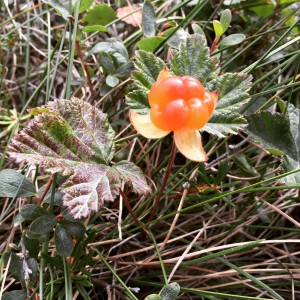

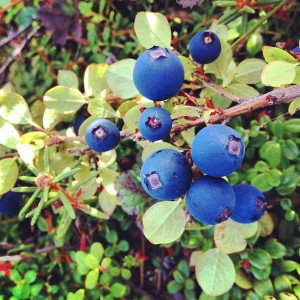
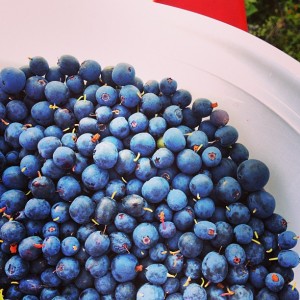

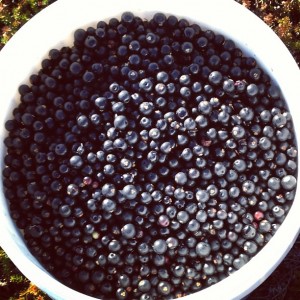


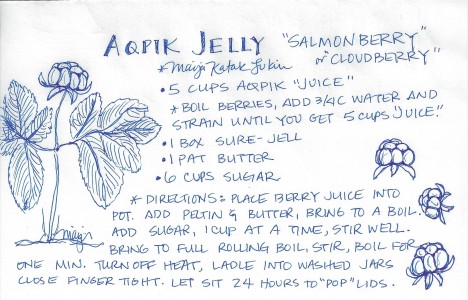
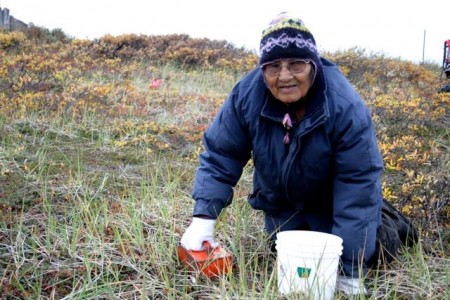
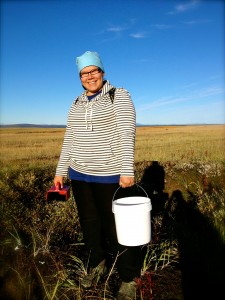
I love this article! I grew up in the interior picking many of the berries you describe. It’s my “subsistence” time to be in the berry patch. I spent many hours in the berry patch with my favorite Athabascan elders. You are absolutely correct in that the “store bought” berries are no comparison to hand picked low bush cranberries, blueberries and raspberries. In fact I leave tomorrow to head to the blueberry patch with my sister in Denali. This is one of my favorite activities. Baasee’ so much for the great Inupiaq translation too.
I loved this blog entry!! Berry picking is an Alaska tradition across cultures and wide reaches of the state. Thank you!
Thank you for sharing the Inupiaq names!